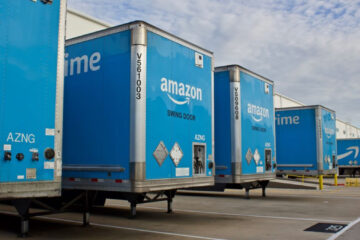It’s been a difficult past several years in the retail industry.
The 2020s began with a jarring shutdown of many stores. As COVID-19 swept through the United States, many places of business were forced to shutter—some against their will.
Related: Formerly troubled retail chain opening 60 new stores in 2025
COVID-19 accounted for some outsized effects in the retail and dining spaces specifically. At first, most people didn’t want to be out and about; preoccupied with thoughts about social distancing, the prospect of dining or shopping in close quarters proved unpalatable.
Not every retailer was fortunate enough to survive the early 2020s. Thousands closed up shop for good, unable to keep the lights on as foot traffic plummeted.
Then, as things began to reopen, that attitude shifted. Suddenly, a crushing influx of shoppers came back with roaring enthusiasm, but reduced capacities made operations — and staying afloat — difficult.
The businesses with enough cash to float themselves for several long months without robust sales were likely much larger corporations. The smaller ones were left to fend for themselves.
Plus, as interest rates rose, operating became increasingly more expensive.
As such, the first half of the 2020s has seen an outsized number of closures and bankruptcies.
A Billabong store in the SoHo neighborhood of New York City will be affected by the coming closures.
More business close for good
Since interest rates have stayed abnormally high, borrowing money is now expensive for just about everyone in the U.S., from everyday Americans to large corporations. Brick-and-mortar retailers, which require a lot of pricey overhead to operate, have been particularly hard it.
That means many of them can’t afford to take on risks to scale and expand. Instead, they’ve been in survival mode for the past several years, and many have gone under as a result.
Related: Walmart sends a hard-nosed message to employees
Last year in 2024, about 500,000 businesses filed for bankruptcy. That’s 14% more than the year prior.
And new data by Coresight predicts 2025 could see yet more closures.
It predicts 15,000 stores could close this year, and places particular emphasis on more Chapter 11 bankruptcy filings, liquidations, and total overhauls (for those retailers that can afford to stay open and remake their business).
Top retailer files for Chapter 11
In early February, Liberated Brands, which manages retail operations for some of the top surf labels in the U.S. and Canada, filed for Chapter 11 bankruptcy protection.
Liberated brands operates online and in-person shopping ops for brands like Billabong, Roxy, Quiksilver, RVCA, Honolua and Boardriders. It manages them through a licensing agreement with Authentic Brands Group, which owns the labels.
The agreement terminated in December, with Authentic Brands announcing it would transition to a new wholesale licensing model in the U.S. and Canada.
More bankruptcy:
Formerly bankrupt retail chain makes painful decision, closing storesAnalyst makes bold prediction about store closures in 2025Formerly bankrupt Home Depot rival returns with major changes
All 122 stores are proceeding with closeout sales, and all will close permanently after liquidation.
In January, Liberated Brands laid off over 360 corporate employees and over 1,000 retail workers.
“The Liberated team has worked tirelessly over the last year to propel these iconic brands forward, but a volatile global economy, consumer spending changes amid a rising cost of living, and inflationary pressures have all taken a heavy toll,” Liberated Brands said in a statement. “Despite this difficult change, we are encouraged that many of our talented associates have found new opportunities with other license holders that will carry these great brands into the future.”
Related: Veteran fund manager delivers alarming S&P 500 forecast


